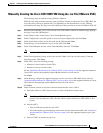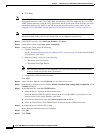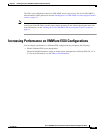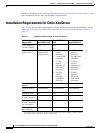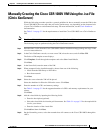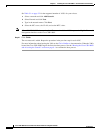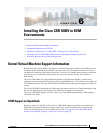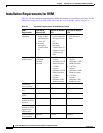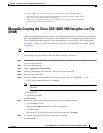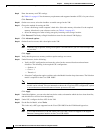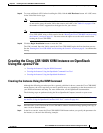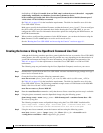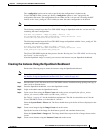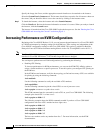
CHAPTER
6-1
Cisco CSR 1000V Series Cloud Services Router Software Configuration Guide
OL-27477-07
6
Installing the Cisco CSR 1000V in KVM
Environments
• Kernel Virtual Machine Support Information
• Installation Requirements for KVM
• Manually Creating the Cisco CSR 1000V VM Using the .iso File (KVM)
• Creating the Cisco CSR 1000V KVM Instance on OpenStack Using the .qcow2 File
• Increasing Performance on KVM Configurations
Kernel Virtual Machine Support Information
Red Hat Enterprise Linux (RHEL), an enterprise virtualization product produced by Red Hat based on
the Kernel-based Virtual Machine (KVM), is an open source, full virtualization solution for Linux on
x86 hardware containing virtualization extensions. It consists of a loadable kernel module, kvm.ko that
provides the core virtualization infrastructure and a processor-specific module, kvm-intel.ko or
kvm-amd.ko.
The Cisco CSR 1000V also supports Red Hat Enterprise Virtualization, Red Hat’s commercially
packaged virtualization platform. Beginning with Cisco IOS XE Release 3.11S, Ubuntu is also supported
for KVM environments. For more information on the KVM products and versions supported, see the next
section.
The Cisco CSR 1000V installation on KVM requires the manual creation of a VM and installation using
the .iso file. Deploying the OVA template into a KVM environment is not supported.
The Cisco CSR 1000V supports the Virtio vNIC type on the KVM implementation. KVM supports a
maximum of 10 vNICs.
KVM Support on OpenStack
Beginning with Cisco IOS XE 3.12S, the Cisco CSR 1000V supports installation of a KVM in the
OpenStack environment. OpenStack support requires the .qcow2 installation file available on the
Cisco.com download page. For more information, see the “Creating the Cisco CSR 1000V KVM
Instance on OpenStack Using the .qcow2 File” section on page 6-5.



